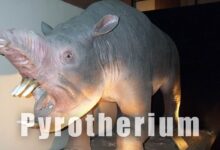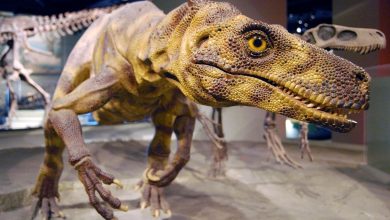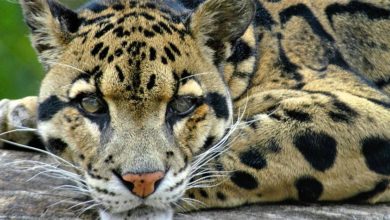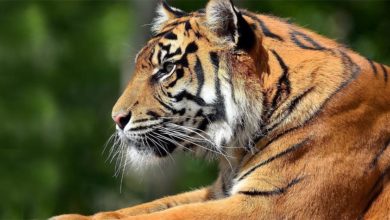Arsinoitherium (Arsinoitherium)
This is another representative of prehistoric mammals. This time we examine an extraordinary inhabitant of Africa that had features of the rhinoceros, the elephant and the hippopotamus. The Eocene giant, called Arsinoitherium, lived millions of years ago in places rich in vegetation as it was the basis of its diet. Please take a closer look at this animal with an unprecedented appearance today.
Classification
- Class: mammals (Mammalia)
- Superorder: Paenungulata
- Order: Embrithopoda
- Family: Arsinoitheriidae
- Genus: Arsinotherium
- Type species:
- Arsinoitherium andrewsi
- Arsinoitherium giganteus (discovered in 2003)
- Arsinoitherium zitteli
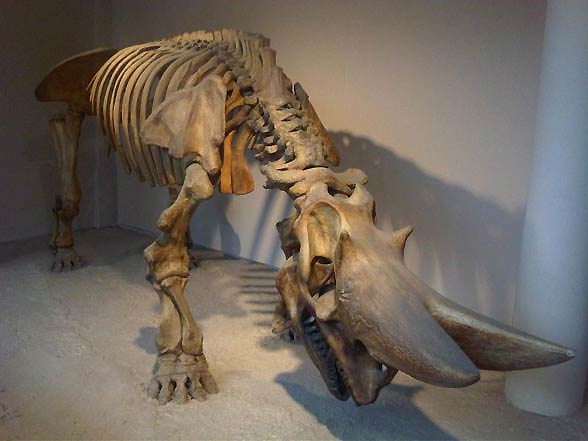
Dating and distribution
This herbivorous giant lived at the turn of the late Eocene and early Oligocene, that is from 36 till 27 million years ago. It occupied areas of current Africa – its remains were discovered in Egypt, Oman and Ethiopia. Its habitat was tropical rainforests and mangrove swamps.
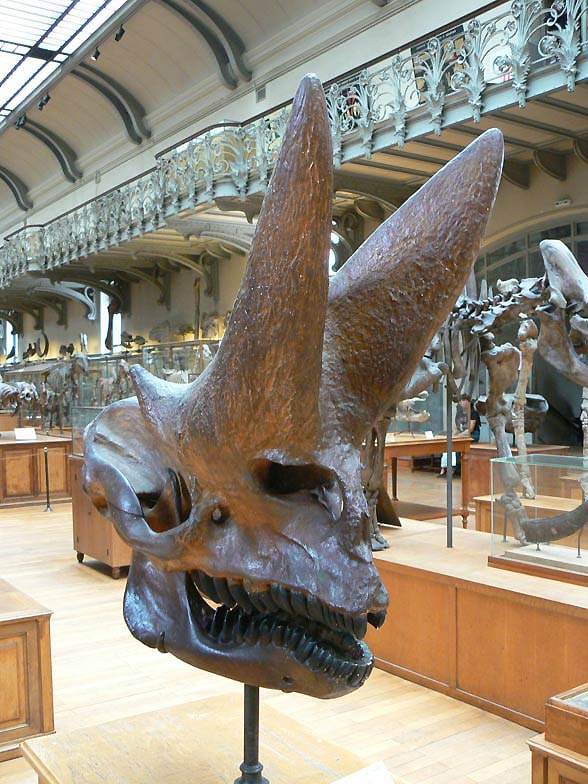
Characteristics
Appearance
The general structure of the body resembled modern rhinoceros, but in terms of behavior it was closer to the hippo – its limbs were better adapted to life in water than on land. Its nostrils were wide, lips were enlarged and mobile which made it possible to pluck leaves and fruit. It had 44 teeth in its oral cavity which were adjusted to consume certain types of vegetation.
Horns
The most characteristic Arsinotherium feature was a pair of enormous base-joined horns located in front of the foreface. These big skull formations were empty inside and they could be used as a medium during the period – thanks to them, the animal was able to emit different sounds. It is also possible that they could serve as the weapon during the fight with the opponent. It is supposed that the biggest horns belonged to males which could proclaim sexual dimorphism.
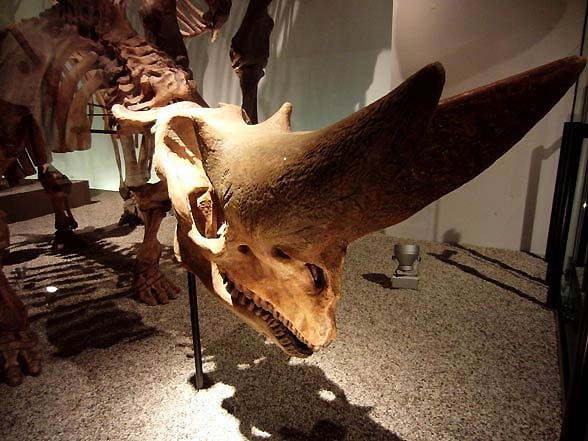
Although these large horns on the foreface were important for self-defense, they could make it difficult for the animal to observe the surrounding area. In connection with this, Arsinotherium had to move its head all the time. Apart from enormous horns, there were also small knob-like horns above its eyes.
Its height at shoulders was 1.75-2.2 m (5.9-7.2 ft), the length of its body was 3-5 m (9.8-16.4 ft) and its weight could reach about 3-4 tons (6600-8800 lb).
The animal was covered with very thick skin resembling the skin of present elephants. It could be greyish apart from fair stomach and breasts although these are only assumptions based on the analogy. The heavy-set body was supported by strong straight legs similar to elephant ones. On the land, it used to move in a clumsy manner but in water, wide paws were excellent paddles.
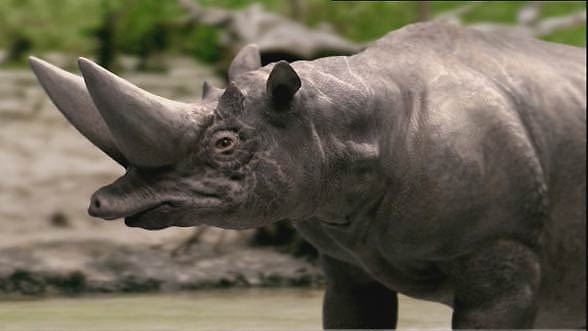
Diet and lifestyle
Because of its teeth, Arsinotherium used to eat fruit, leaves and branches. Its size suggests it had to eat huge amounts of vegetation daily and therefore, it cannot be excluded that it spent most of its day scavenging. It is also possible he used to live in small groups with which it spent most of its time in water; similarly to the present hippopotamus.
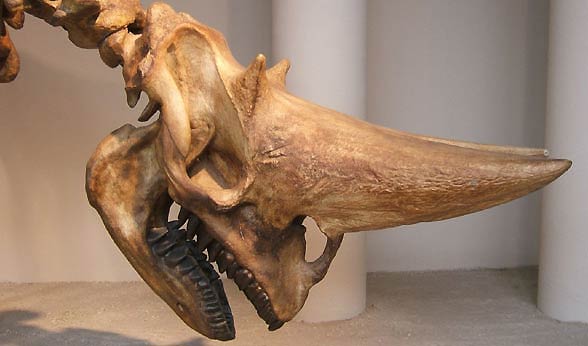
Name derivation and discoveries
Its scientific name comes from the name of the queen of Egypt, Arsinoe I whose palace was situated close to the place where the remains of the prehistoric mammal were found. At the same time, it was the only paleontology place where full skeletons of this animal were found- Faiyum Oasis in North Egypt on the Libyan Desert.
Similar remains were also found outside Africa, in south-east Europe, in Mongolia and Turkey. Fragments of jaws were dug out there and they probably belonged to older Arsinotherium relatives. Mongolia’s founding was called Radinskya yupingae but European remains were classified as Crivadiatherium iliescui (as nomen dubium – doubtful name). Fragmentary findings from Turkey were named Palaeoamasia kansui (nomen dubium as well).
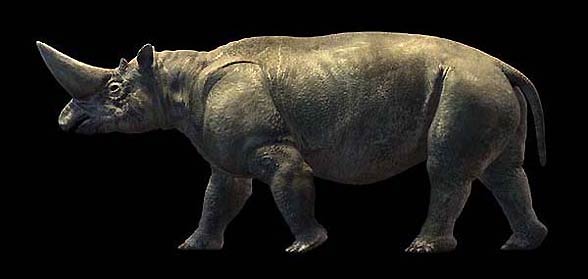
Detailed information / size
Arsinotherium
Size
- Body length: 3-5 m (9.8-16.4 ft)
- Height at shoulders: 1,75-2,2 m (5.9-7.2 ft)
- Length of horns: up to 1,5 m (4.9 ft)
- Weight: 2,5-4 tons (5,500-8,800 lb)
- Number of teeth: 44
Distribution and dating:
- Appearance: 36-30 (Arsinotherium giganteum ~ 27) millions of years ago
- Time: late Eocene/early Oligocene
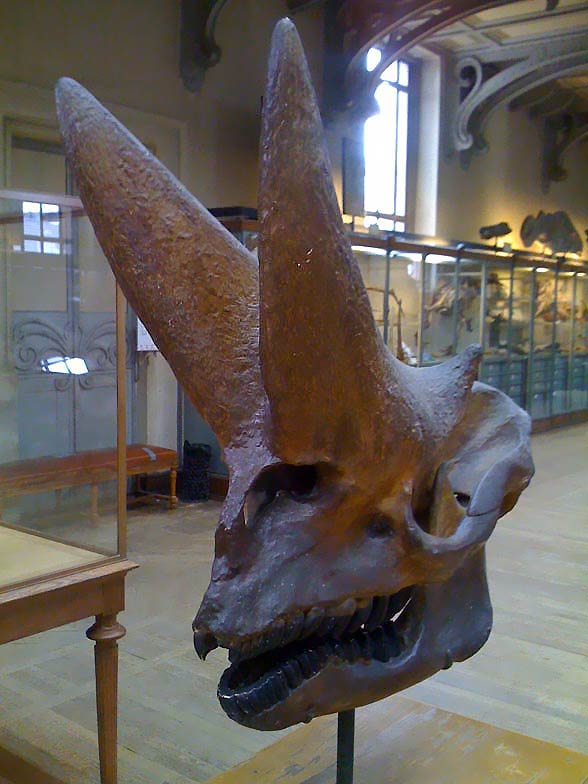
Arsinotherium – interesting facts
- Although Arsinotherium was similar to a rhino and behaved like a hippo, its closest relative is an elephant.
- The big size of the mammal protected it against attacks of predators. It is possible that young or sick animals were victims of Creodonta – mammals that formed the dominating group of predators in Africa.

Recommended
- Extinct animals
- Elasmotherium
- Archaeopteryx
- Sarcosuchus
- Deinosuschus
- Animals & dinosaurs records
- The fastest animals – Top 100
- The fastest birds – Top 10
- The heaviest dinosaurs – Top 10
- The longest dinosaurs. Sauropods Top 10
- The longest predatory dinosaurs. Theropods Top 10
- The heavies predatory dinosaurs Top 10
- The longest and largest ornithopods
- The longest and largest ceratopsians
- The shortest sauropods
- The smallest dinosaurs – Top 10




